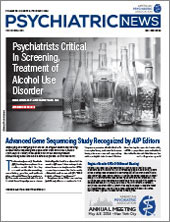Youth violence is a significant public health emergency and affects thousands of young people daily. The ripple effect of this violence is far reaching and impacts families, communities, and schools. The exposure to violence has disrupted our youth’s development and can lead to long-lasting mental health issues such as impaired decision-making, difficulty coping with stress, isolation, and delays in learning.
Research on youth involved in violence has increased the understanding of risk factors linked to violence. For example, toxic stress resulting from bullying (physical, mental, and cyber), food insecurity, and living in impoverished communities or in homes with violence contribute to the likelihood of youth experiencing violence and/or mental health issues. Exposure to violence often leads to disruption in a young person’s life, and manifests in different forms, such as missed school, displaying at-risk behaviors, substance use, or isolation. Violence prevention is central to promoting teen mental health and wellness.
Psychiatrists are integral to recognizing these at-risk situations youth face. Because there is no stereotypical profile of a violent youth offender, early identification, assessment, and intervention are key.
Monitoring and acting when warning signs are exhibited may reduce the risk for violence. Maintaining open dialogues between parents, teachers, and health care professionals may help identify warning signs for violence and determine whether emergency intervention is required. Communication is a critical component in developing plans to reduce risk. Key warning signs to consider include the following:
•
Intense expression of anger or impulsivity.
•
Expression of intent to commit a violent act.
Informed consent, documentation, and duty to warn are key risk mitigation strategies. These strategies help to complement and strengthen one another, working together to minimize risks in a comprehensive, sustainable, and long-term manner.
•
Prior to treating the patient, obtain proper written consent from the person with the legal authority to consent on behalf of the patient. This includes consent to speak with other health care professionals or school counselors as deemed appropriate.
•
Conduct a complete history and mental status assessment, which may include a review of medical records and collateral information from the child’s current and former behavioral health professionals, school counselors, and primary care physician.
•
Document contemporaneously, and complete thorough risk assessments.
•
Document changes in behavior, such as social disconnection, bizarre statements, or out-of-character actions.
•
Document assessment of whether the patient was a victim of bullying, cyberbullying, or perpetuating bullying.
•
Document expressions of thoughts of harm to self or others and aggressive behavior and note if the patient has any access to weapons.
•
Document use of drugs or alcohol.
•
Be aware of your state’s specific laws regarding duty to warn.
Treating youth who demonstrate violent tendencies can be arduous. Maintaining open lines of communication between parents, school professionals, and other providers may help to identify warning signs for violent behavior sooner. Remember to consistently document communications, assessments, and follow-up actions taken in the medical record.
Understanding your state’s laws on duty to warn and confidentiality regarding reporting and disclosure is critical. If you have any questions regarding your duty to warn, do not hesitate to contact your risk management professional or seek legal counsel. ■
This information is provided as a risk management resource for Allied World policyholders and should not be construed as legal or clinical advice. This material may not be reproduced or distributed without the express, written permission of Allied World Assurance Company Holdings, Ltd, a Fairfax company (“Allied World”). Risk management services are provided by or arranged through AWAC Services Company, a member company of Allied World. © 2024 Allied World Assurance Company Holdings, Ltd. All Rights Reserved.


